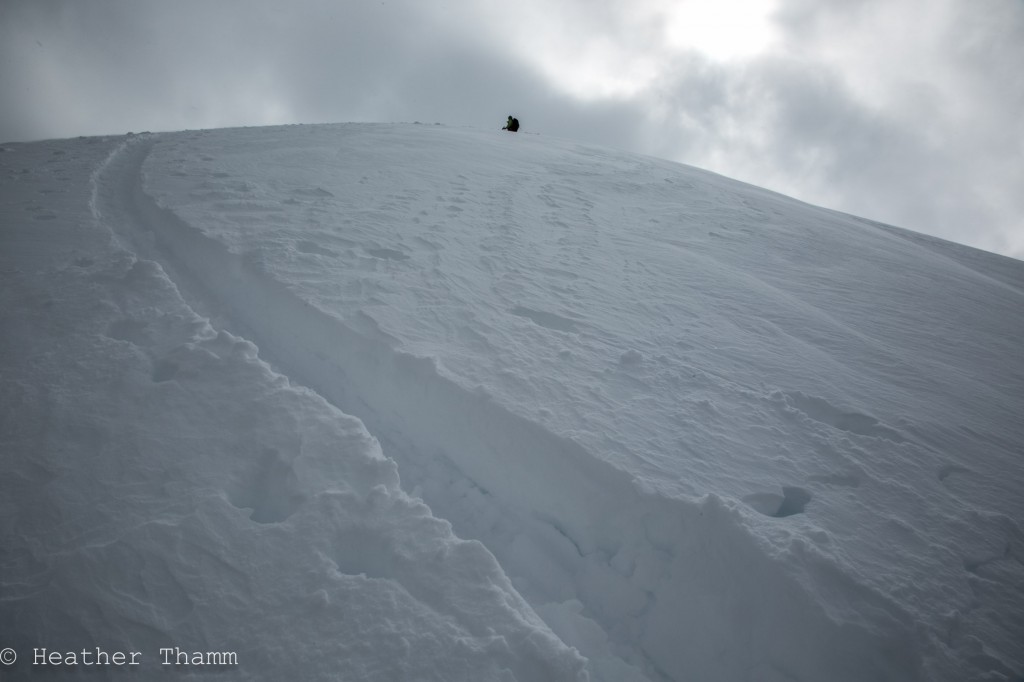Over the last three days cooler temps have helped freeze and stabilize the snowpack following a large wet storm that caused a widespread avalanche cycle this past weekend. A supportable crust has formed on all aspects below 4000’ and a few inches of new snow is sitting on top. If winds are calm as forecasted today, the sun could heat up this surface snow quickly and start breaking down the crust below it.
Wet loose avalanches will be possible both in the alpine at mid elevations. Expect activity to be of the most concern on Eastern aspects where the snowpack is thin and the sun has the most affect earlier in the day. On Southern and Western aspects pay attention as a supportable crust begins to soften in the afternoon. If you find the snow becoming wet and heavy avoid steep sun baked aspects. It will be on these aspects where a wet loose avalanche could be difficult to ski/ride out of as it starts to entrain snow and gain momentum.
In a pit at 3550′ on Sunburst several melt/freeze crusts were found winin the top meter of the snowpack. These crusts were formed by rain and wet snow that fell last weekend (4/17-4/19.)

A D2 avlanche on Taylor Pass released last weekend during a large storm that brought gale force winds and heavy rain to Southcentral Alaska. Luckily cool temperatures over the last few days have allowed the snowpack to freeze and stabilze quickly.




